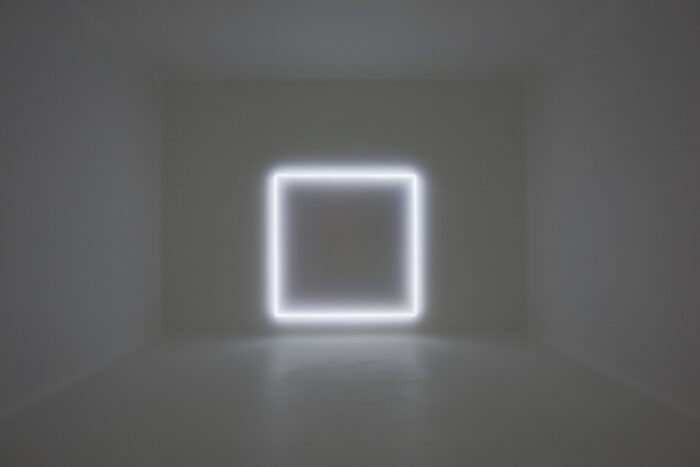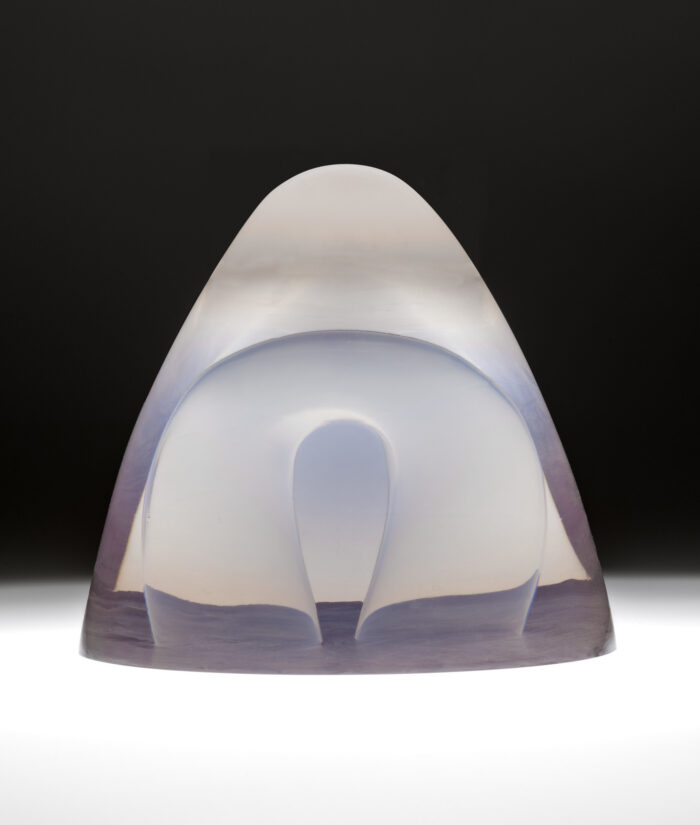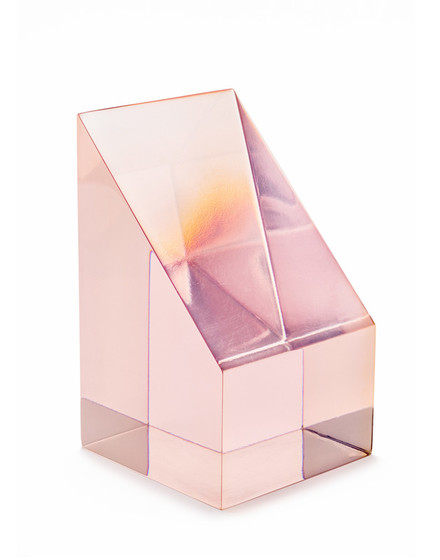Exhibition Features Works by Judy Chicago, Robert Irwin, Helen Pashgian, James Turrell, Doug Wheeler, and Many More
June 3–September 4, 2022

20 × 20 ft. Los Angeles County Museum of Art, purchased with funds provided by the Modern and Contemporary Art Council in honor of the museum’s 40th anniversary, © Doug Wheeler. Photo © Museum Associates/LACMA
NASHVILLE, Tenn. (April 7, 2022)—The Frist Art Museum presents Light, Space, Surface: Works from the Los Angeles County Museum of Art, an exhibition of sculptures, paintings, and immersive installations by a loose-knit group of artists working in Southern California from the 1960s to the present. Organized by the Los Angeles County Museum of Art (LACMA), Light, Space, Surface will be on view in the Frist’s Ingram and Gordon Contemporary Artists Project Galleries from June 3 through September 4, 2022.
Featuring 50 works by 22 artists that range from small sculptures to experiential environments, this visually alluring exhibition explores how the properties of light and space as well as highly polished surfaces can themselves be art forms. “This show challenges us to rethink what art can be and the materials that artists can use to create their work,” says Carol S. Eliel, Senior Curator of Modern Art at LACMA. “Although these works might evoke Southern California for visitors—its sunshine, open spaces, and glossy surfaces on surfboards and cars—the roots of Light and Space and “finish fetish” go much deeper.”
The renowned “light and space” and “finish fetish” artists are united by an interest in manipulating the medium of light, projected or reflected, to alter the perception of form, architectural space, and surface qualities. Going beyond the tradition of representing light through paint or photography, artists like Robert Irwin, James Turrell, and Doug Wheeler create installations in which the actual light takes a form that seems to exist between presence and absence, providing a means of entering a mysterious immaterial world.
“In the 1960s and 1970s, various Southern California artists began to create works that investigate perceptual phenomena: how we come to understand form, volume, presence, and absence through light, seen directly through other materials, reflected, or refracted,” says Eliel. “Many of the artists used newly developed industrial materials such as cast resins, fiberglass, neon fixtures, and sprayed paint to link art and technology in a cool aesthetic that echoes the emotional detachment of pop art and minimalism of the period.” Their glossy surfaces and intense light are often thought of as characteristic of Southern California’s identity, with its car and surfboard culture and bright oceanside environment, though the artists in fact drew on many different experiences in developing their practices.
The most widely recognized figure in the exhibition is James Turrell (b. 1943), whose work directly addresses light’s power to create illusory space. In one of his works in the exhibition, Afrum (White), projected light generates the appearance of a radiant cube floating in the corner of the room.
As Frist Art Museum audiences may remember from a 2014 solo exhibition in the Gordon Contemporary Artists Project Gallery, Helen Pashgian (b. 1934) has been fascinated by the complex relationship between light and surface since early childhood. In Untitled, one of two works by Pashgian in the exhibition, she set a bent acrylic rod within a cast resin object, complicating the way her almost transparent sculpture reflects and refracts light.

Mary Corse (b. 1945) has explored various ways to bring light to the medium of painting through the use of glass microspheres—the tiny beads used for highway lane lines and signage, which reflect and refract the car headlights. This led to Corse’s signature White Light paintings, which she continues to make today. The microspheres transform ordinary paintings into light-responsive canvases that shift in appearance depending on the viewer’s position. Such works exist as ever-changing perceptual experiences in which the viewer is an active participant.
Peter Alexander (b. 1939) believed only perfectly polished finishes—as seen in his wedge sculptures in the exhibition—would fully immerse the viewer. He came to polyester resin as a sculptural material through surfing, intrigued by the translucent, moldable nature of the liquid resin he used to glaze and repair his surfboard. Larry Bell (b. 1939) also considers the surfaces of his works to be paramount and was attracted to the surface properties of glass. Through a process of vacuum coating, he modifies the way glass absorbs, reflects, and transmits light, allowing him to create infinite variations in color, transparency, and reflectivity.

To further enhance the multisensory experience in the galleries, the Frist has collaborated with the Nashville Ambient Ensemble, who composed new music inspired by select works in the exhibition that will be featured on the audio tour instead of verbal commentary. Organized and led by electronic composer Michael Hix, the Ensemble’s lineup is made up of some of the city’s most creative and innovative artists, including Belly Full of Stars, Diatom Deli, and Jack Silverman. While Hix says he normally opts for warm, analog synth sounds in his music, for this project he chose to create a “clean, digital palette to complement the show’s focus on industrial materials, light, and electricity.” As an additional resource, a behind-the-scenes video of the Nashville Ambient Ensemble recording the audio tour at Club Roar in Nashville will be accessible via a QR code in the gallery and on FristArtMuseum.org. The Ensemble’s debut album, Cerulean, was released in 2021 on the Nashville record label Centripetal Force.
Exhibition Artists
Peter Alexander, Larry Bell, Billy Al Bengston, Judy Chicago, Gisela Colón, Ron Cooper, Mary Corse, Ronald Davis, Guy Dill, Laddie John Dill, Fred Eversley, Robert Irwin, Craig Kauffman, John McCracken, Bruce Nauman, Helen Pashgian, Roland Reiss, Roy Thurston, James Turrell, De Wain Valentine, Doug Wheeler, and Norman Zammitt.
Programs
Thursday, June 2
6:30–7:30 p.m.
Curator’s Tour: Light, Space, Surface: Works from the Los Angeles County Museum of Art
Ingram Gallery; free to members;
admission required for not-yet-members; registration required
Learn more about the immersive installations, paintings, and sculptures on view in Light, Space, Surface on this tour of the exhibition with organizing curator Carol S. Eliel, Senior Curator of Modern Art at LACMA.
Exhibition Credit
Organized by the Los Angeles County Museum of Art
Image Credits
1. Installation view of Doug Wheeler, Untitled (Light Encasement), 1968, in Light, Space, Surface: Works from the Los Angeles County Museum of Art at the Addison Gallery of American Art, Andover, MA (November 23, 2021–March 20, 2022). © Doug Wheeler. Photo credit: Frank Graham
2. Helen Pashgian. Untitled, 1968–69. Cast polyester resin and acrylic insert, height: 8 3/8 in., diameter: 8 5/8 in. Los Angeles County Museum of Art, purchased with funds provided by the Hillcrest Foundation and the Modern and Contemporary Art Council Acquisitions Endowment, © Helen Pashgian. Photo © Museum Associates/LACMA
3. Peter Alexander. Untitled, 1968. Cast polyester, 9 x 5 3/8 x 5 1/2 in. Los Angeles County Museum of Art, gift of Elliott and Adrenne Horwitch. © The Alexander Parducci Administrative Trust. Photo © Museum Associates/LACMA
Supporter Acknowledgment
Platinum sponsor: HCA Healthcare/TriStar Health
Education and community engagement supporter: Windgate Foundation
Hospitality sponsor: Union Station Hotel
Funded in part by the Hays Foundation and the Gordon CAP Gallery Fund
With additional support from the Frist Art Museum’s Friends of Contemporary Art
The Frist Art Museum is supported in part by The Frist Foundation, the Metro Nashville Arts Commission, the Tennessee Arts Commission, and the National Endowment for the Arts.
Connect with us @FristArtMuseum #TheFrist #LightSpaceSurface
FOR ADDITIONAL INFORMATION
Buddy Kite: 615.744.3351, bkite@FristArtMuseum.org
Ellen Jones Pryor: 615.243.1311, epryor@FristArtMuseum.org
